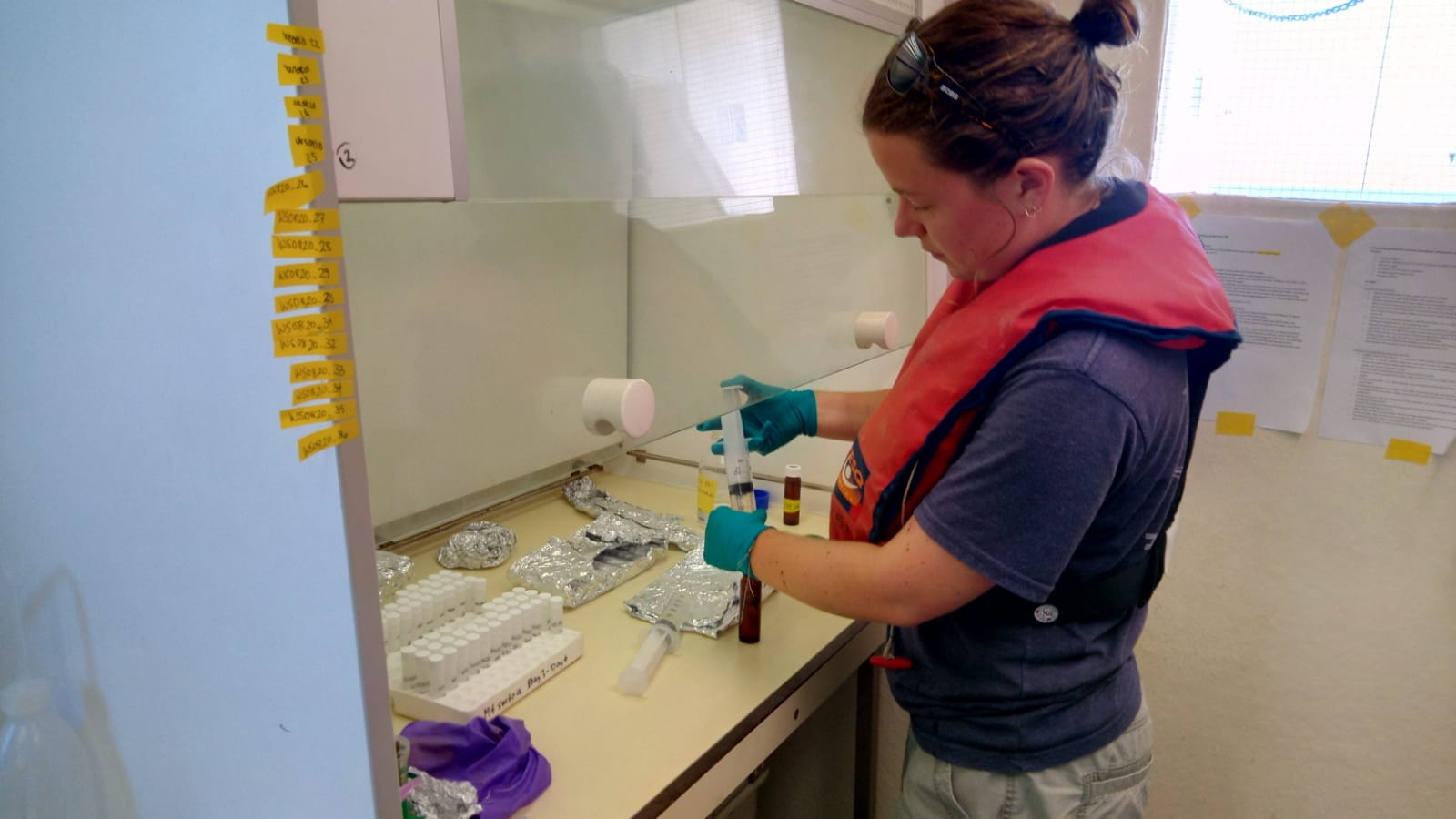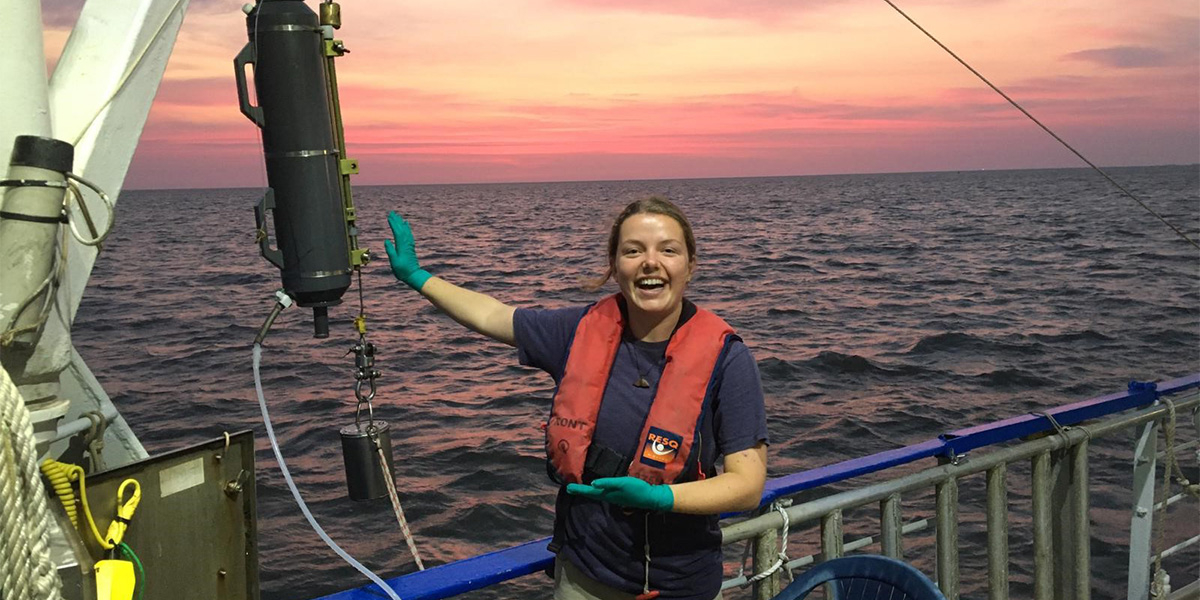Pierre Ramond summarizes the cruise on RV Navicula 11-13 August 2020
Back in the Wadden Sea for the 5th and final cruise of this project, the sampling and processing of the ever-so-muddy seawater was a well-oiled machinery onboard of the RV Navicula. This time the crew welcomed two newcomers, Danica, for her first cruise experience, and Helen, a young but seasoned sailor. Already on our first day, the sea blessed us with the sight of multiple seals sprawled onto a mud bank, like us they probably enjoyed the sun that accompanied us throughout the cruise. Soon after our first lunch prepared by Hein, we started the process that would be repeated every hour for two days. First, the CTD sensor is immersed, it measures the temperature, salinity, oxygen, and fluorescence of the seawater across depth for us. Second, the Niksin bottle samples surface seawater, this water will later be filtered or stored in vials inside the lab-container on deck of the Navicula.
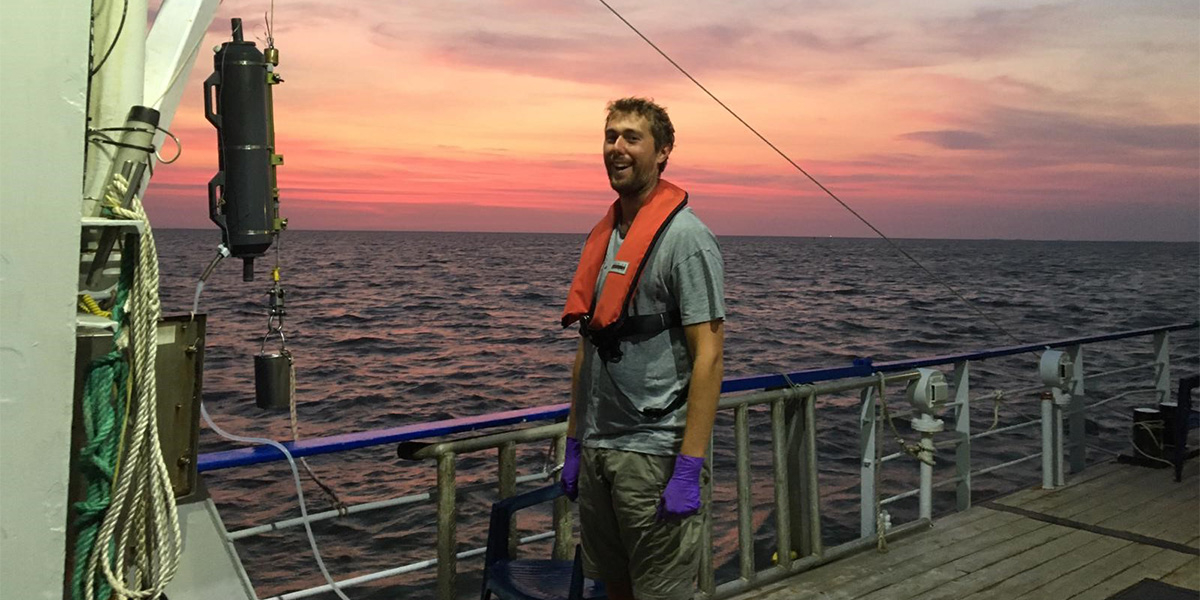
Within the lab, we set up three different work stations on the lab-benches. On the first one, water is filtered with a syringe into small vials, the vials will later be used to analyze the nutrient, inorganic and organic carbon content of each sample. On the second bench, the microbes present in the water are "fixed" with formaldehyde (careful, it is toxic!) to later study the microbes in our samples under the microscope. On the third bench, seawater is filtered with a peristaltic pump onto a thin filter with a small pore-size (0.2µm). After filtering around 1.5 litres of seawater, the filter has concentrated the various marine microbes that form an interacting community within the Wadden Sea water. DNA based methods will then help us investigate the composition of this community while the frequency of our sampling (1 sample/h) will help us track the changes in composition at a very fine resolution.
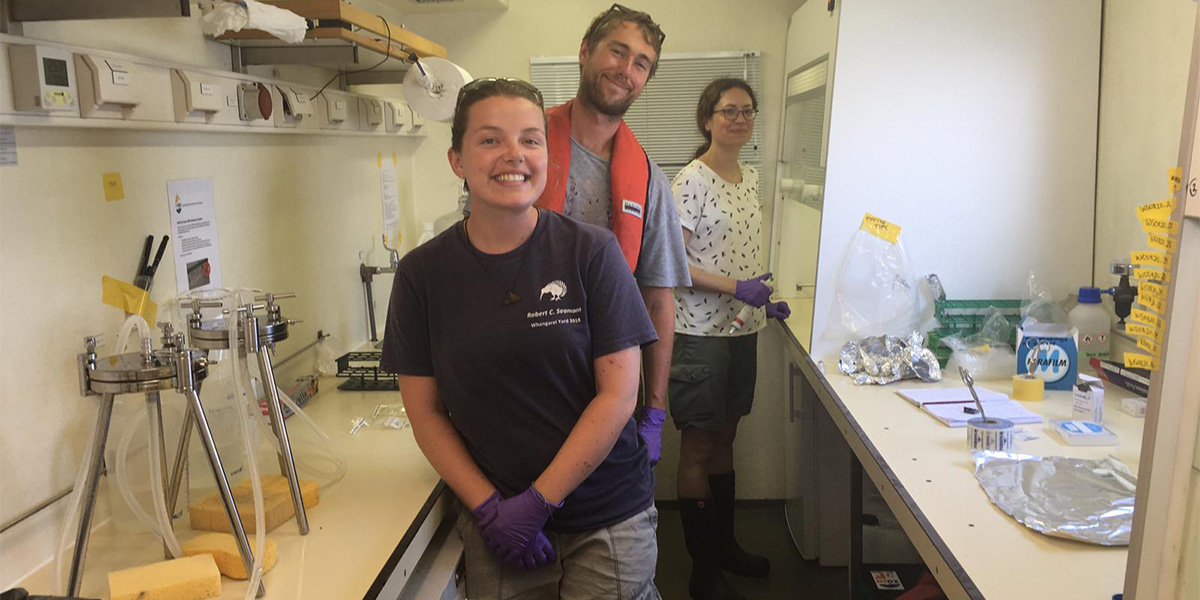
After processing some samples together, the first shift or "sunset shift", Julia and Danica, took over until 2am. Then, the second shift or "sunrise shift", Pierre and Helen, continued the sampling until 2pm. The 12h shifts are long but each team carried on, helped by the clear sky, the gentle rocking of the sea, the soaring seabirds and the luxurious meals prepared by Hein. On the second day, the sun was blazing and the crane we used to immerse the Niskin bottle could not resist the heat. Fortunately, Klaas-Jan and Hein found a quick solution by using the Navicula's rubber-boat crane, no blood was shed and the sampling continued until the next day. On the second day fatigue started to set in but both shifts enjoyed a nice barbecue on the deck for dinner, it assuredly helped us to get through the night. At 13h45 on Thursday, Pierre and Helen finally sampled and processed the 48th sample marking the end of our cruise, Julia and Danica took over the container to start packing the material while the "sunrise shift" took a deep nap despite the roaring motors that took us home. Finally, we noticed the shores of Texel and warmly thanked Klaas-Jan and Hein.
Our eyes on the pictures we took before leaving the boat show that we were all longing for one thing: a well-earned night in our beds!
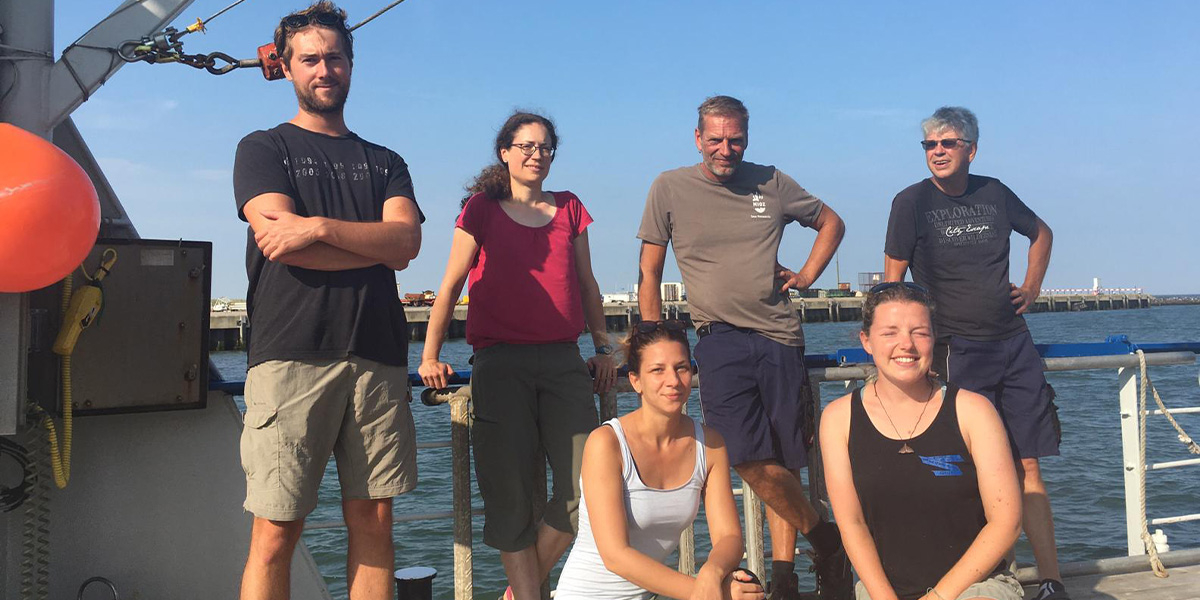
Danica writes about her impressions from her first research cruise
As the saying goes “every beginning is hard”, I was wondering how my very first sampling cruise as member of the MMB department at NIOZ will turn out for me. To kill the suspense of the much-appreciated reader right from the start, everything was great and that had to do primarily with our small team consisting of Pierre, Helen and Julia as our chief scientist who were somehow managing to incorporate fun in 12 hour shifts with some very loud Tina Turner music and cheering for certain DNA/RNA filters to run faster (due to copyright I shall omit full names of the favorites
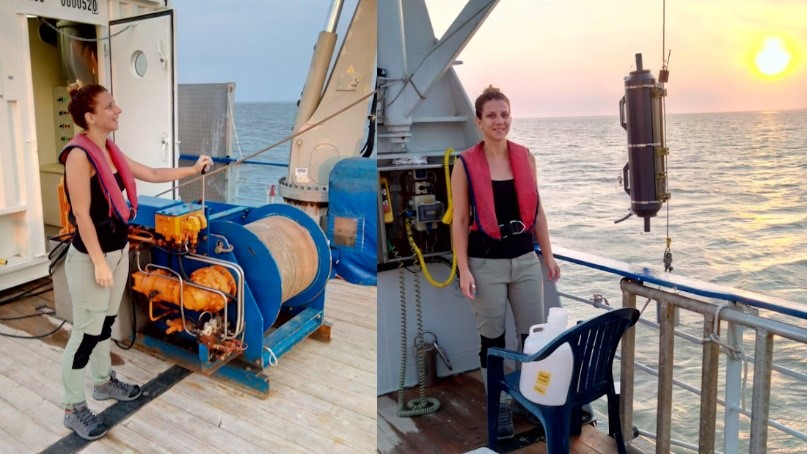
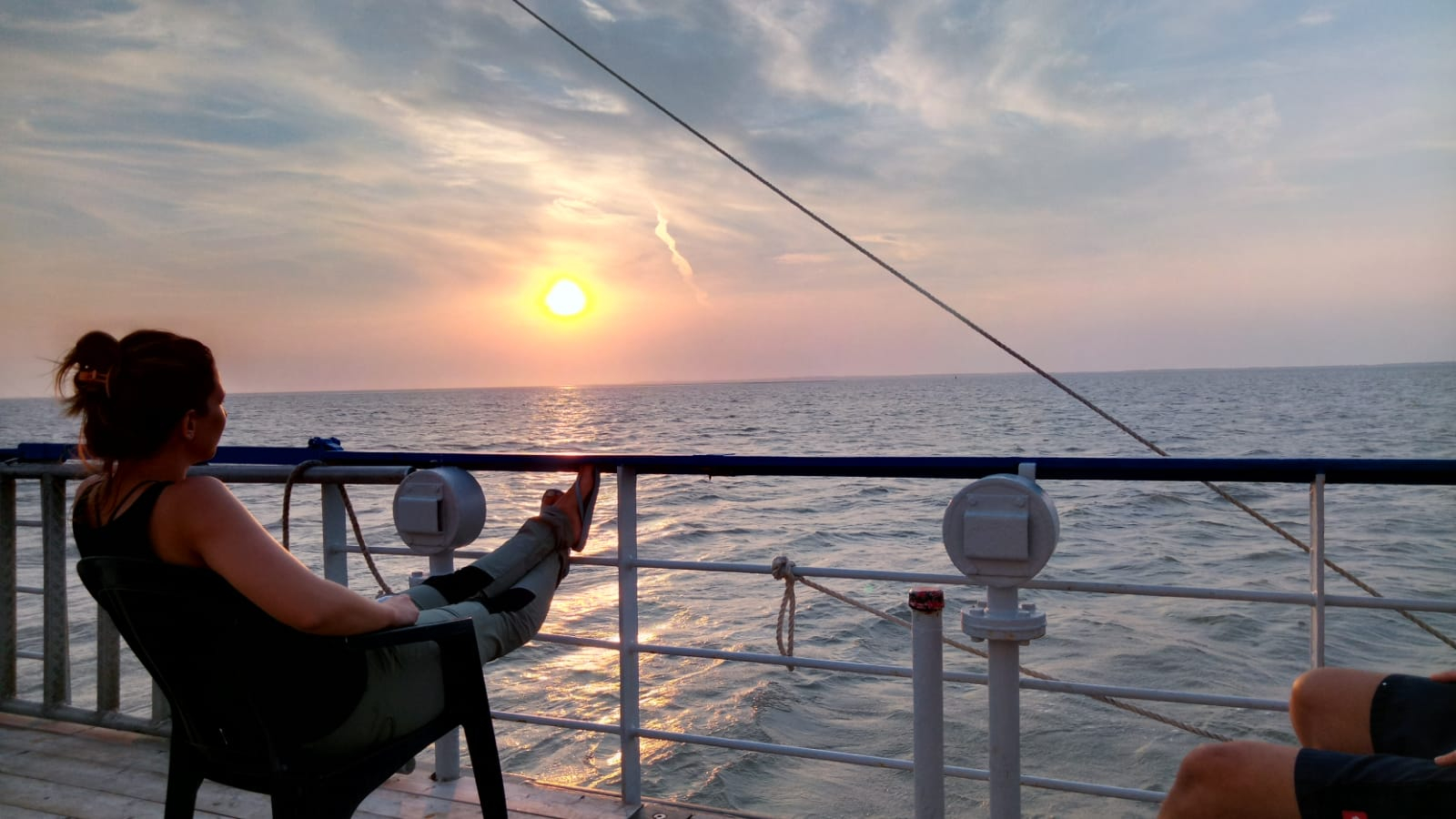
Helen summarizes her experience with a poem
Sailors and scientists tend to keep their words brief. For mariners this is not always the case when they’re telling tales of past journeys or singing shanties that can go on verse after verse. Ask any scientist about their opinion on a controversial new practice in their field and you might be locked in a conversation till sunrise. But both career paths are defined by the sharing of information in short, succinct, efficient style. What better way to do this than Japanese poetry? A series of haikus to paint you a picture:
Our Navicula
Motor through the Waddenzee
Lighthouse: Terschelling
2am wakeup
Why I volunteered for this?
5am sunrise
Denise and Roger
Vacuum pumps extraordinaire
Collecting microbes
The CTD cast
Reflecting the changing tides
Low tide means quick cast
Swim call: mid-morning
Jumping into muddy seas
Sad there are no seals
Hein serves mackerel
Home-caught, home smoked, made with love
Small crew, big portions
Texel from water
Another flattering light
Welcoming us home
Thanks again for a fun 48 hours!
